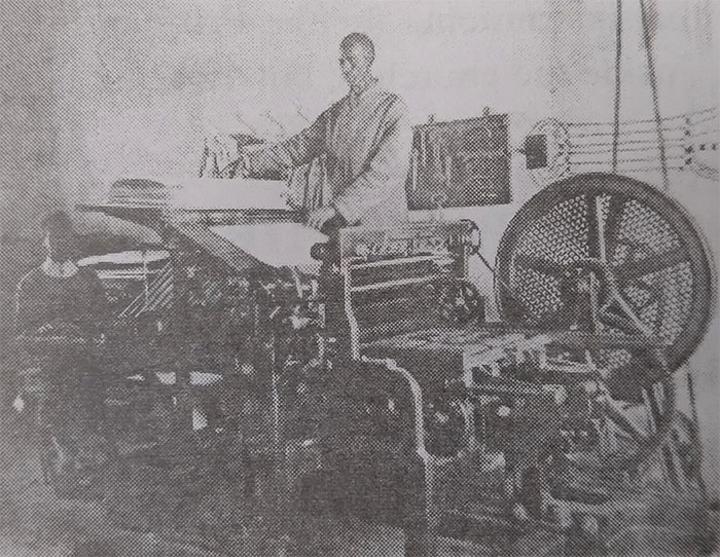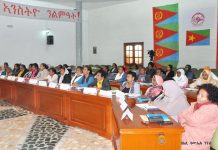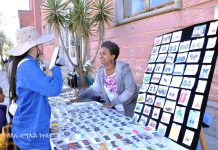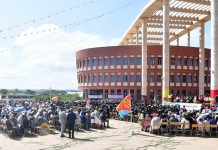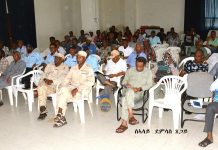Africa-Press – Eritrea. The first printing press in East Africa was built at Imkulu, a small town 5 km to the North West of Massawa, in 1879 as a modern infrastructure by the Swedish Evangelical Missionary (SEM). Imkulu is a Tigre word which literally means ‘mother of all.’ It earned the name because Imkulu was receiving people who sought refuge from starvation and local conflicts. In many respects, Imkulu was a center of enlightenment in the region in the late 19th century.
The Swedish missionaries wanted to promote literacy in Eritrea to enable the congregation at their church to understand the gospels in their own mother-tongue. For this purpose they founded several schools, which prior to their establishment were available only in monasteries and madrasas.
The first formal school in Eritrea was founded in Massawa in 1871. Soon other schools were founded, including one in Massawa in1872, a boarding school in Gheleb in 1874, and another school in Imkulu in 1877.
Prior the establishment of the printing press, the station at Imkulu was used as a school and training center for hand craft, carpentry, tailoring and embroidery. It also gave some medical services and served as an asylum for refugees who were displaced due to war and invasions.
As SEM’s educational services spread in different parts of the country the publishing of books became essential, and Imkulu was chosen to serve as the place for the printing press as it had been their biggest mission station. Earlier on the missionaries did spend some time in the western lowlands around Kuluku, Ogana and Tender (Kunama speaking villages) and Gheleb, Anseba region. But when many died due to malaria, the missionaries decided to go back to the coastal areas, where they opened Imkulu Printing Press in 1879, and Eritrea became the first country in East Africa to give printing services. As the missionaries spent time in the highlands and western lowlands, they became familiar with the local people and their languages, which were Tigre, Tigrinya and Kunama.
The printing press engaged in publishing primers for basic education, newsletters as well as tacks of the bible and hymn books in Tigrinya, Tigre and Kunama. In 1890 the New Testament was translated in to Tigre, with the aid of the versions of the bible in Geez, Amharic, Swedish and the original text in Greek. The translation required a systematic study of the Tigre language, its vocabulary and grammatical structure.
Later on, in 1895, the printing press was moved to Asmara, which the Italians chose on 3rd August 1889 as their Eritrean colony’s capital. In 1903, the first magazine in Tigrinya, “Melkti Selam”, was published in Asmara. It represents the oldest publication in Tigrinya language although its contents were limited to spiritual matters. Four years later a book called “Mezmur Selam,” which had some collection of hymns, was also translated from Swedish to Tigrinya. It was translated by several native speakers and Swedish missionaries who knew the Tigrinya language. The book is still serving as a main guide of worship for the members of the Evangelical Lutheran Church.
The publication of the bible in Tigrinya bible was completed in 1957 after the translation had been done. At the time of its publication it was the biggest book in the Tigrinya language. The 1957 version of the bible in Tigrinya is still serving as the main reference for Eritrean and Ethiopian speakers of the Tigrinya language.
Notable people who grew up at the Swedish missionary include Woldeab Woldemariam, the patriotic and revolutionary leader, Isaak Teweldemedhin, head of the Eritrean school system from the 1940s to the 1960s, Tedla Bayru, the first leader of the government of Eritrea during the period of federation, Aman Michael Andom, Army General and later in 1975 Head of the Provisional Government of Ethiopia, Prof. Asmerom Legese, a renowned sociologist and Human Anthropologist, researcher and author, and the Rev. Mussa Aron, author of numerous books.
Although the printing press was moved to Asmara in 1895 Imkulu comprehensive training center continued giving its services by giving academic programs, theology and training skills in a variety of fields until it was totally destroyed by an earthquake in the mid first-half of the 20th century.
In 1956, a school was established by the missionaries in Keren to serve exclusively deaf students and became the first school of its kind in East Africa. The objectives of the school were to help the deaf to overcome their barriers and be independent, free from being seen as the burden of their parents and the society. In 1965, two Eritrean teachers joined the school in Keren, and in 1988 a school for the deaf was opened in Asmara.


